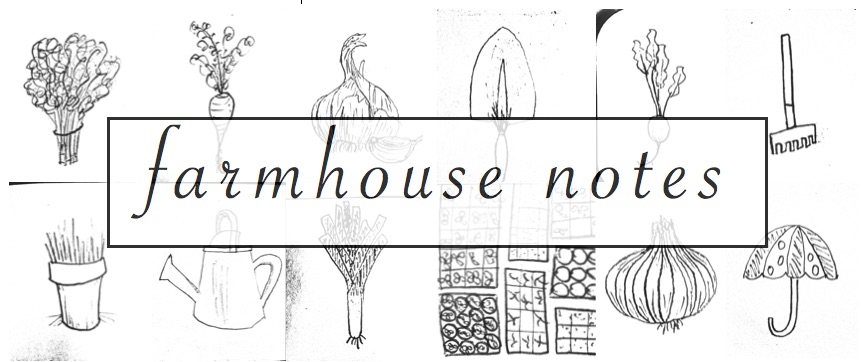Well, those three are currently in abundance only in my spring-dreaming mind. In winter, at least while the farm stand is closed, we have too many eggs. Now that we milk Jingle once a week, we have plenty of milk and cream, too. That leads to cheesemaking, which creates whey, which we turn into loaf after loaf of homemade bread (the whey lends an addicting sourdough tang).
It all collided one night recently with a hunk of bacon, and transformed out of necessity into savory French toast. I threw it together almost without thinking--my only logic was need. What to do with all this milk? Need to use bacon. Have leeks. Need something sharp for contrast.
So when we actually sat down to eat the french toast, in a haphazard fashion as it came off the griddle, I was totally blown away. I think I said "this is so good, just so good" to Tim about ten times in surprise.
I'm usually a sucker for sweet French toast with maple syrup and whipped cream, but I skipped a second piece of the sweet stuff for a third piece of savory that time. It was just that good.
 |
| Not French toast, but another recent abundance-fueled experiment: homemade neufchâtel, a soft French cheese |
For the French toast
1 cup whole milk
1 egg
1/2 teaspoon salt
1 tablespoon flour
Butter for frying
6-8 slices of hearty bread
For the toppings
bacon slices
1-2 leeks, trimmed, washed, and diced
2 tablespoons red wine vinegar
parmesan cheese, thinly sliced
In a shallow baking dish, whisk together (carefully) the milk, egg, and salt. Scatter in the flour, whisking constantly. Set aside.
Heat a medium-sized skillet over medium-high heat. Add the bacon slices and cook, turning over once or twice, until crispy. Remove and set aside. Turn the heat down to medium and add the leeks to the hot pan. Sauté--in the bacon grease, yes!--until soft and more richly green. Then add the red wine vinegar and cook a minute or so more until the liquid is gone.
Now go back to the toast. Heat the butter in a griddle or frying pan over medium-high heat. Meanwhile, soak the bread slices in the milk-egg mixture for about 30 seconds, then flip and soak for 30 more--the time here, though, will depend on the freshness of the bread. When the slices are thoroughly soaked, transfer them to the griddle. Cook about 1 minute on each side--the time here, too, will depend on the thickness of the slices--until golden brown, crispy on the outside, still soft in the middle but not squishy.
Plate the toast. Layer with slices of parmesan cheese, then heap with leeks and bacon (I snipped the bacon up with scissors into little crumbles).
Serve with a bowlful of spicy greens.
Some thoughts: Next time, I want to try mustard, perhaps instead of (or with, if I'm feeling bold) the vinegar. I'm sure it wouldn't hurt to smear the toast with more butter before layering on the parmesan cheese. Right?! And the possibilities for cheese and meat are pretty much endless--as long as the cheese is sharp and the meat is crispy, you just can't mess this up.
